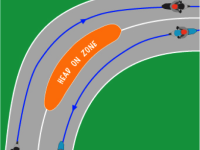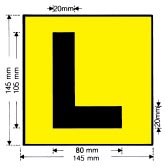What Is The Best Road Position To Be In
The question is often asked; “What is the best road position to be in?” The simple answer to this question is: The safest.
What is meant by this? Briefly, it means that if you are safe from oncoming hazards or hazards around you, then you are in the best position.
Here at BikeSAFE Motorcycle Training, we teach a simple rule with regards to road positioning. Take ownership of the lane in which you are riding by positioning yourself in the dominant position on the road, much like playing squash and dominating the “T” on the court. In other words, ride possessively, not aggressively.
Apply the simple rule: Left Lane – Right Track, Right Lane – Left Track.
While riding, one should always be aware of what you are approaching.
- Scan the surface of the road for hazards, such as debris, spills, wet patches, gravel etc.
- Scan ahead for any hazards preventing you from progressing in the direction that you are travelling, such as hazards on the side of the road, or other vehicles coming towards you.
- Assess the “structure” of the road ahead and determine your lane and track position accordingly. We use only the area of road used for the direction in which we are travelling.
In the following series of photographs, you will notice the positions that the rider ahead adopts. These are based on Australian Driving regulations of driving on the left hand side of the road and following the compliance of keeping left, unless overtaking.
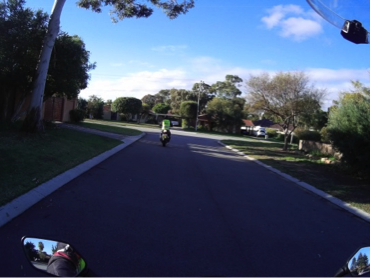
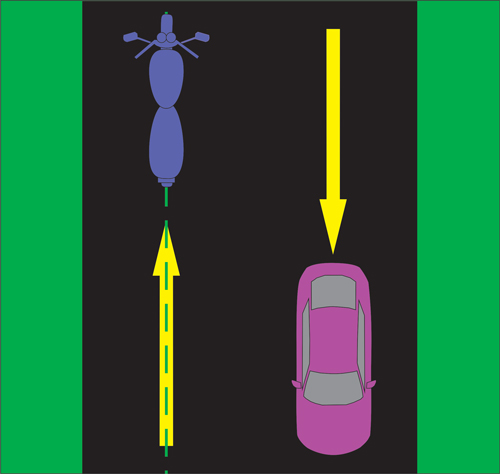
Figure 1 : The rider is in the middle of the left hand side lane. In this situation the rider is riding on the drip line, oil slick, middle track or whatever you would like to call it. This is the safest position where there is no lane marker in the centre of the road. The rider is sufficiently far away from oncoming vehicles and is away from the kerb. The rider has about 1.5 to 2 meters of buffer on either side to avoid a possible hazard. Unmarked roads are generally quiet residential where the volume of traffic is insufficient to create a meaningful oil line.
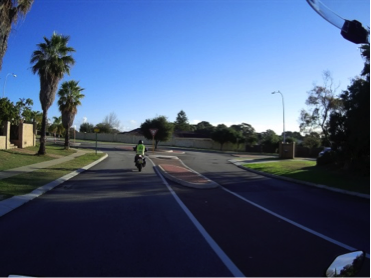
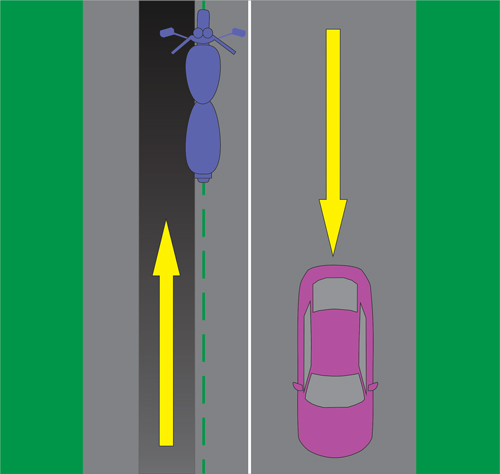
Figure 2 : The rider is riding in the right hand side track, alongside the lane divider. This positions them away from the kerb and in the event of a single solid line, in direct line of sight of the approaching vehicle.
Rule : Left Lane – Right Track
This forces the vehicle behind to overtake the rider on the right hand side when it is safe to do so. Should the rider decide to change lane, it’s a simple track change (right track, over line on the right, to the left track) to get into the adjacent lane. This position provides optimal visibility of approaching intersections and vehicles.
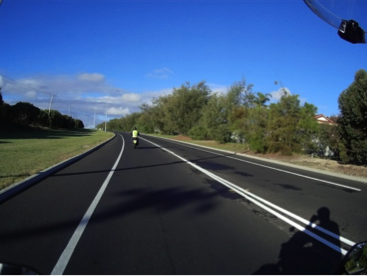
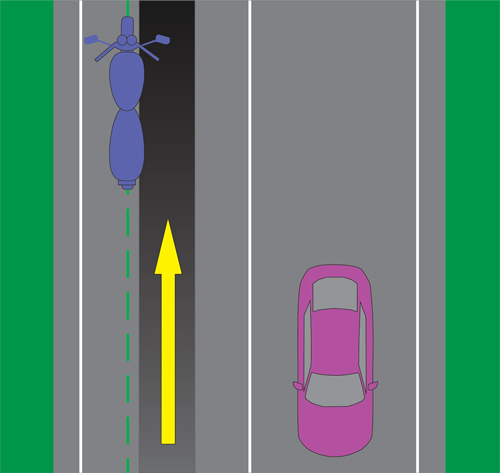
Figure 3 : In this situation, there is an additional “lane” to the left of the rider. Regardless of the function of the lane, this is viewed as the left lane, so the structure is Left, Right (LR). The rider is therefore in the right hand lane.
Rule : Right Lane – Left Track
The advantages of being in this position are:
- The rider has a wide buffer to the left and to the right. Any hazard from the front, the rider can move into the cycle/emergency lane. Any hazard from the left and the rider can move to the right towards the lane divider.
- This is the dominant road position and forces the vehicle behind to overtake on the right hand side when safe and appropriate to do so.
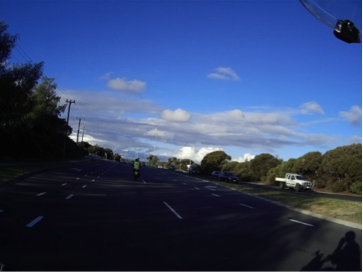
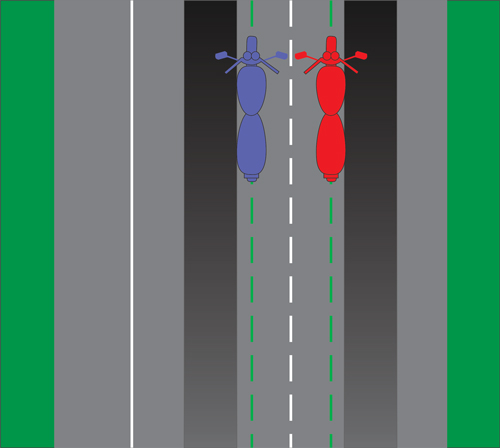
Figure 4 : This is a multicarriage road, in this case a dual carriage with a left turning lane and a right turning lane (approaching an intersection).
Disregarding the right turning lane, the road structure in this scenario is Left (1), Left (2), Left (3), Right (LLLR). The rider is not turning left, so would not be in the far left lane (L1). The next lane over (L2) is the cycle/emergency lane and the rider is prohibited from using this lane for normal riding. The rider moves over to the next lane (L3) and positions themselves in the right hand track.
Rule : Left Lane – Right Track
Again, this is the dominant road position.
- Motorists seldom – if ever – attempt to overtake (undertake) on the left, using the emergency lane, where the road is a multilane road. Vehicles coming up behind the rider will move into the right hand lane to overtake the slower motorcyclist.
- Should the rider wish to change lanes into the right hand side lane, then it’s a simple track change to the right, making the manoeuvre short and efficient.
Of course, as with everything, there is always a caveat, and when it comes to road positioning, the caveat is, if you are in a hazardous position, then move away and adapt your riding position, such as going around a bend. Always ensure that you move out of the collision/head-on zone. In our situation, we would move to the left hand track to avoid that zone.
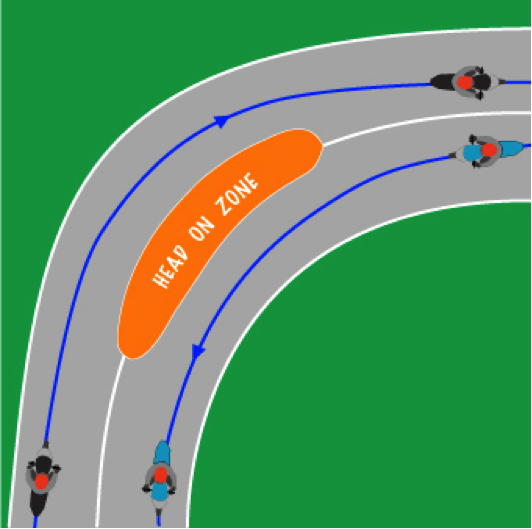

So to recap:
When riding in the left hand lane, ride in the right hand track
When riding in the right hand lane, ride in the left hand track
If you cannot see the hazard coming towards you, or the hazard cannot see you, move away to the left hand track – away from the collision zone.

